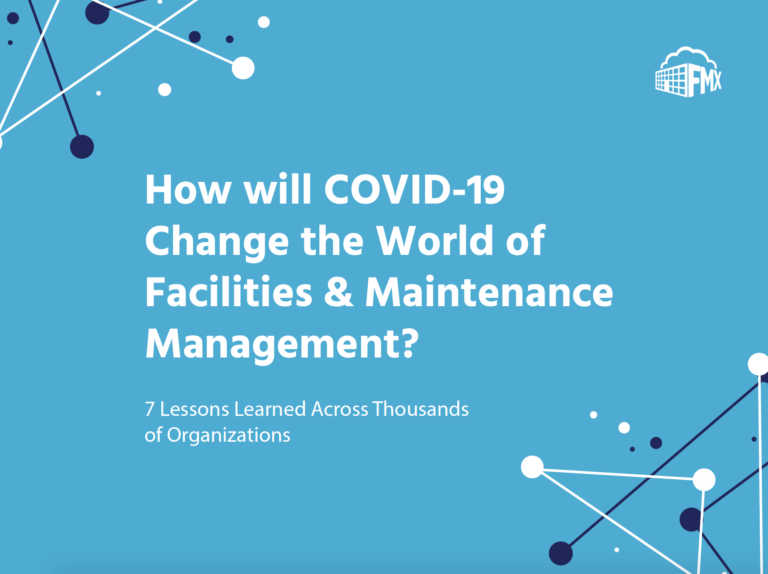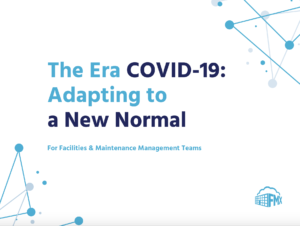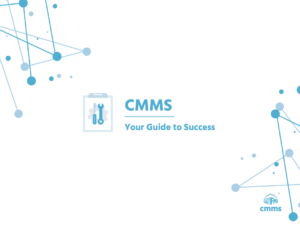COVID-19, also known as the Coronavirus, has created unprecedented times globally and across every industry. While it’s first and foremost a health crisis, it’s secondly an economic force that has impacted virtually every organization, and changed – for now at least – how they operate.
Facilities and maintenance leaders stand at the forefront of this new reality and play pivotal roles in triaging the impact of the pandemic, returning their organizations back to a new normal, and finding ways to be better prepared should there be another pandemic in the future.
What we’ve learned at FMX is that leaders have observed 7 essential lessons learned that they’re now applying to their organizations.
1. People come first
During a pandemic the first thing that should be considered is the safety, health, and welfare of people – including our employees, contractors, vendors, and customers. And for some organizations – like schools – students, families, and the community.
Since drastically adjusting business processes (remote work, distance learning, takeout and drop off only, new cleaning standards, stricter safety protocols, and more), it’s become apparent to facilities and maintenance leaders how important it is to have systems and processes in place to take care of everyone around them. Having the ability to quickly assess buildings, equipment, events, and key processes right at your fingertips allows you to better take care of the people most important to your organization.
Applying maintenance software to processes is one way organizations are ensuring the safety and wellbeing of their staff, customers, and community. When organizations return to “normal”, having effective communication and collaboration systems in place will get everyone back to business the right way, at the right time, and with the right precautions in place.
2. Business continuity comes second
The current pandemic came on quickly, or at least more quickly than most thought was possible. Organizations didn’t scale down and begin working remotely over several weeks and months – rather, for most, it was a matter of days.
Facilities and maintenance leaders have realized the importance of ensuring business continuity in this unprecedented time. For every organization there are essential functions that never go away and must remain in place for the livelihood of the organization. However, some processes can, and should, be paused for the time being because they are not deemed “business critical” today. Organizations that rely on a supply chain of products, components, and/or different types of inventory (e.g. food, supplies, consumable items) realize that getting all processes back up and running doesn’t just happen overnight. With the global disruption of COVID-19, a full “normal” might take weeks, months, or even years, to fully occur.
Leaders are documenting the steps, the timelines, and the dependencies that follow best practices for creating a business continuity plan. This article by Chris Matt, Managing Editor at FacilitiesNet, was written back in 2011, but is just as relevant today. Further research was conducted by the International Facility Manager Association (IFMA) and author Stephen Brown on the topic of Business Continuity Planning that profoundly stated that “almost 40% of businesses that experience a catastrophic event do not re-open.” If you consider the restaurant industry, experts are predicting it could be greater still. Be sure to prioritize business critical items today, postpone or pause those that aren’t critical, and put a business continuity plan in place to prepare for the future.
3. Mitigating everyday risks will continue
In a matter of days to weeks, thousands of organizations closed their doors and only a skeleton crew remained, if even they remained. Many had no standard procedures for securing buildings, protecting stored supplies, and restricting access to confidential information. Leaders are finding that they have no control over energy usage, especially given the pandemic formed over the spring season where in many locations the daily temperature can span 40 degrees. You may have a vision of your workplace’s back door being unlocked, all of the lights being left on, and the thermoset being set to 75 on a 20 degree day.
Many facility and maintenance leaders are using software to gain full control of their buildings and grounds. This ensures that all procedures are followed by employees, contractors, vendors, and even the general public, while also allowing leaders to control equipment, lighting, and HVAC systems from their homes.
4. Communication & collaboration can no longer be taken for granted
Across every industry, and even in 2020, there’s a continued reliance on word-of-mouth, emails, and phone calls for maintenance processes and procedures. If the current pandemic has shown us anything, it is the need to work quickly and ensure transparent communications across – and even beyond – the organization. Having access to data and information that is necessary to make decisions cannot be overstated in times like these.
Facility and maintenance leaders are discovering that the time once spent on these inefficient methods cannot continue. Key processes surrounding facilities management and maintenance management must now become digital and be managed in a single system of record accessible to all stakeholders. This allows everyone to stay up-to-date on work order status, equipment malfunctions, inventory levels, event status, and more.
Communication becomes even more crucial when considering dwindling budgets. Many organizations are already feeling the strain of operating with fewer resources, and some resources may not return should budgets tighten. Leaders and teams may find themselves wearing multiple hats, well beyond the ones they currently wore, to make up for the difference. If maintenance requests, preventive maintenance tasks, and other essential tasks aren’t effectively consolidated and dispatched, critical work may be missed while unnecessary tasks get prioritized.
5. Moving to digital processes is part of the solution
Leaders whose jobs entail connecting people, processes, and technologies find that they can ease the stress of daily business with systems that make communication easier. They enable their teams with laptops, smartphones, and other devices so they can work anytime, anywhere, and on any device. Organizations that did not have this technology in place prior to the pandemic discovered a major void in communication and discovered many employees couldn’t contribute to business processes because of it.
We must also consider the security of systems and data. Ensuring the right employees, contractors, and vendors have access to the right information maintains compliance and limits risk to the organization. Without these measures in place, confidential information could be accessed, shared, and communicated too broadly, leading to further disruption or worse.
6. Cleaning protocols are suddenly even more important
We’ve all taken cleanliness for granted. Consider the last time you thought about how clean a surface was, or if the facilities you work in have clean door handles, tables, or counters. Prior to the COVID-19 pandemic, these were things we didn’t think much about, or at least too often. We’ve entered a new era where cleanliness has become paramount.
The Centers for Disease Control (CDC) is the authority on cleaning and sanitization for schools, workplaces, and community locations, and has outlined detailed guidance for every type of organization. Facility and maintenance leaders are rapidly applying these protocols to their organizations and are working to educate and empower their teams. Many are establishing handwashing stations, distributing hand sanitizer, and doubling efforts to clean “high touch surfaces” at or beyond the guidelines from the CDC. This helpful infographic from Cleaning & Maintenance Management magazine outlines the way to read and understand the labels on cleaning products to ensure they are suitable for battling the spread and help to eradicate the COVID-19 virus. Further, the use of electrostatic sprayers can dramatically improve cleanliness and sanitation efforts in a fraction of the time of traditional cleaning methods.
A key way to ensure proper execution of these protocols is using software to create preventive maintenance tasks. This ensures tasks are assigned to the right team members, who have the right training and supplies to do the work. Documenting the cleaning that must be done, reporting its execution, and sharing this information with leadership—and even the community—gives valuable reassurances at a time where it matters most.
7. Facilities & maintenance leaders will lead the return to “normal”
Government leaders at the federal, state, and local levels are continuously updating the public about the pandemic from a health and safety standpoint. And even though it’s their decision to outline when organizations and businesses can get “back to normal,” it’s the facility and maintenance leaders who will play a pivotal role in making it actually happen.
You can already form the questions in your own mind about what will be asked by employees, contractors, vendors, and the general public:
- Are the buildings open yet?
- Are new cleaning and sanitization measures in place?
- How can we ensure they are being followed and done frequently to protect everyone?
- Who is responsible and accountable for cleanliness and sanitization?
- What if someone in my building gets sick? What happens then?
The time of uncertainty and questions will continue well after the pandemic period ends. To reassure everyone, facility and maintenance leaders are establishing cleaning protocols from the CDC, training their teams, and documenting, tracking, and inspecting the work being done.
Some leaders are also thinking about the future and what lessons can be applied to prevent future pandemics or at least the spread of viruses and disease. Using software tools to capture, document, and track industry best practices for cleaning and sanitization gives everyone the assurances they need that the right work is being done to protect everyone. Only then can things return back to normal.


